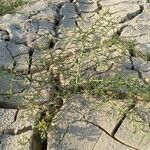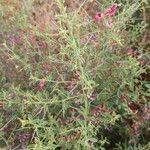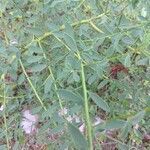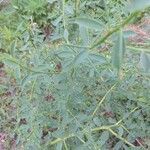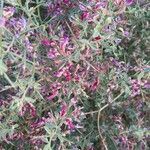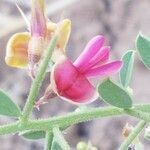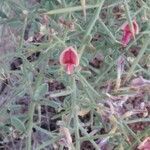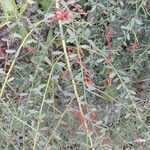Much-branched, thorny, almost leafless shrub up to 1.5 m high; aerial stems annual, green turning yellowish, striate, glabrous, upper branches ending in hard, sharp spines; underground stems extensive. Leaves: Dark green, simple, up to 20 mm long, sparse. Flowers: Purple, solitary, borne on the spine-tipped branches. Fruits: Brown pods, one-to two-seeded.
A small shrub. It has thorns. It grows 30-60 cm high. There are 3-8 flowers in short racemes. The flowers are small white pea flowers. The pods are hairless. They are constricted between the seeds.
Resprouting, thorny shrub to 1.5 m. Leaves 1-foliolate, cuneate-obcordate, leathery. Flowers scattered on axillary thorns, purple.
